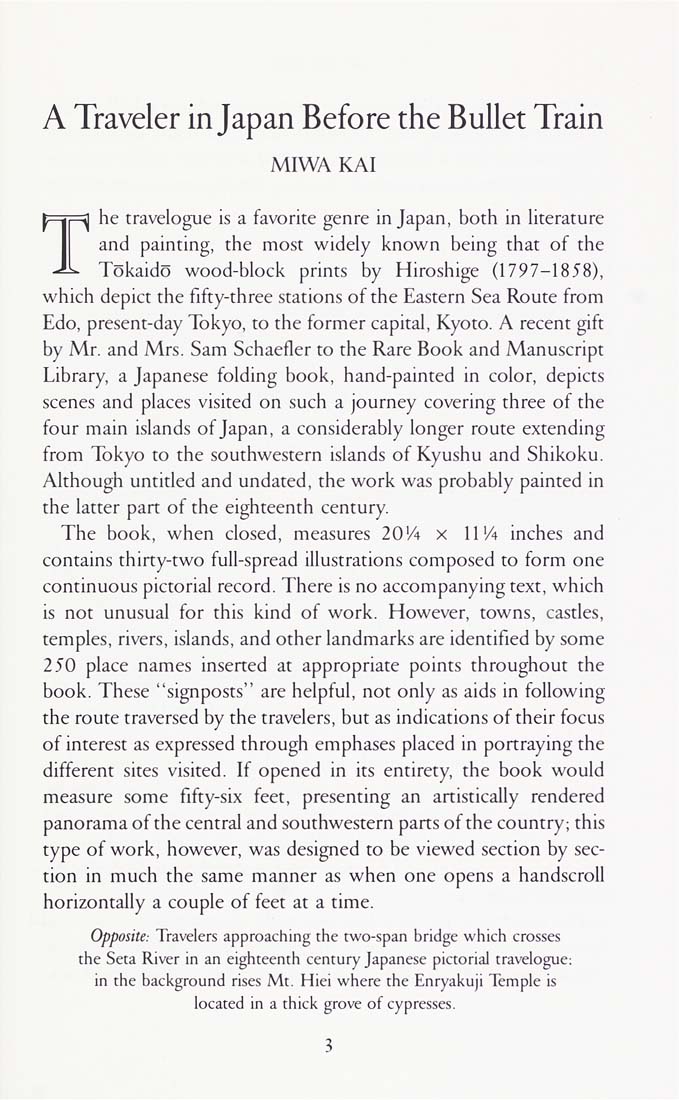Columbia Library columns (v.36(1986Nov-1987May))
(New York : Friends of the Columbia Libraries. )
|
||
|
|
|
|
| v.36,no.2(1987:Feb): Page 3 |

A Traveler in Japan Before the Bullet Train MIWA KAI The travelogue is a favorite genre in Japan, both in literature and painting, the mo.st widely known being that of the Tokaido wood-block prints by Hiroshige (1797-18J8), which depict the fifty-three stations ofthe Eastern Sea Route from Edo, present-day Tokyo, to the former capital, Kyoto. A recent gift by Mr. and Mrs. Sam Schaefler to the Rare Book and Manuscript Library, a Japanese folding book, hand-painted in color, depicts scenes and places visited on such a journey covering three of the four main islands of Japan, a considerably longer route extending from Tokyo to the southwestern islands of Kyushu and Shikoku. Although untitled and undated, the work was probably painted in the latter part of the eighteenth century. The book, when closed, measures 20'/4 x 11'A inches and contains thirty-two full-spread illustrations composed to form one continuous pictorial record. There is no accompanying text, which is not unusual for this kind of work. However, towns, castles, temples, rivers, islands, and other landmarks are identified by some 250 place names inserted at appropriate points throughout the book. These "signposts" are helpful, not only as aids in following the route traversed by the travelers, but as indications of their focus of interest as expressed through emphases placed in portraying the different sites visited. If opened in its entirety, the book would measure some fifty-six feet, presenting an artistically rendered panorama ofthe central and southwestern parts ofthe country; this type of work, however, was designed to be viewed section by sec¬ tion in much the same manner as when one opens a handscroll horizontally a couple of feet at a time. Opposite: Travelers approaching the two-span bridge which crosses the Seta River in an eighteenth century Japanese pictorial travelogue; in the background rises Mt. Hiei where the Enryakuji Temple is located in a thick grove of cypresses. 3 |
| v.36,no.2(1987:Feb): Page 3 |







